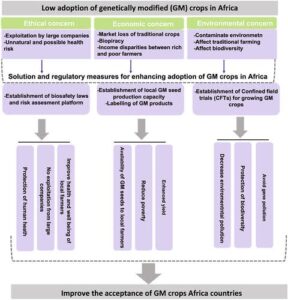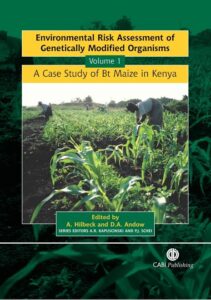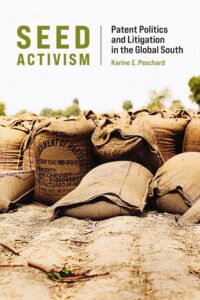Back to: Botany 400 Level
Welcome again, my brilliant Afrilearn scholar! You’ve come so far, and now it’s time to tackle a topic that brings real-life drama into science—case studies on GMO disputes and biopiracy. This is where science meets law, culture, and fairness. And trust me, these stories are not just for the news; they affect African farmers, communities, and researchers like you and me.
Case studies on GMO disputes and biopiracy
Let’s say a local community in Ekiti has been growing a special type of yam for generations. One day, a foreign company takes samples, modifies them in a lab, and then patents the new variety—without telling or compensating the original farmers. Now, the same farmers have to pay to use what they’ve always had. That’s biopiracy.

On the other hand, GMO disputes happen when countries or groups disagree over the use, safety, or fairness of genetically modified crops. These disputes raise deep ethical, environmental, and economic questions.
Let’s now look at some real cases that have shaped the global conversation.
Case Study 1: The Bt Cotton Debate in India
Background:
Bt cotton is a genetically modified cotton designed to resist pests. It was introduced to help farmers in India reduce pesticide use.
Issue:
While some farmers recorded increased yields, others faced debt due to high seed prices and crop failures. Many smallholder farmers couldn’t afford the seeds or didn’t fully understand how to use them. This led to economic hardship and social uproar.
Lesson:
Technology must be matched with proper education, affordability, and local support systems.

Case Study 2: Biopiracy of the Neem Tree (India)
Background:
The neem tree is widely used in traditional African and Indian medicine. A foreign company patented a pesticide made from neem extract.
Issue:
Local communities argued that they had used neem for centuries and the knowledge was stolen. After public pressure, the patent was eventually cancelled.
Lesson:
Traditional knowledge must be recognised and respected in global research.
Case Study 3: Hoodia Plant in Southern Africa
Background:
The San people of the Kalahari had long used the Hoodia plant to suppress hunger during long journeys. A pharmaceutical company patented the active ingredient for diet pills.
Issue:
The San were not initially included or compensated. After legal intervention, they later received benefit-sharing agreements.

Lesson:
Indigenous communities must be part of any commercial use of their biological resources.
Summary
- Biopiracy is the unfair use of traditional knowledge or resources without permission or benefit-sharing.
- GMO disputes often arise over safety, ownership, and the impact on local farmers.
- Ethical and legal frameworks must protect both innovation and indigenous rights.
Evaluation
- What is biopiracy in simple terms?
- Mention one major GMO-related dispute and its impact.
- Why is it important to involve local communities in biotechnology research?
Your knowledge is no longer just academic—it’s practical, powerful, and people-centred. You’re learning how science affects lives, communities, and justice. Keep asking the right questions, and never stop standing for what’s right. With Afrilearn, your learning has purpose and power. Let’s keep growing greatness together!
